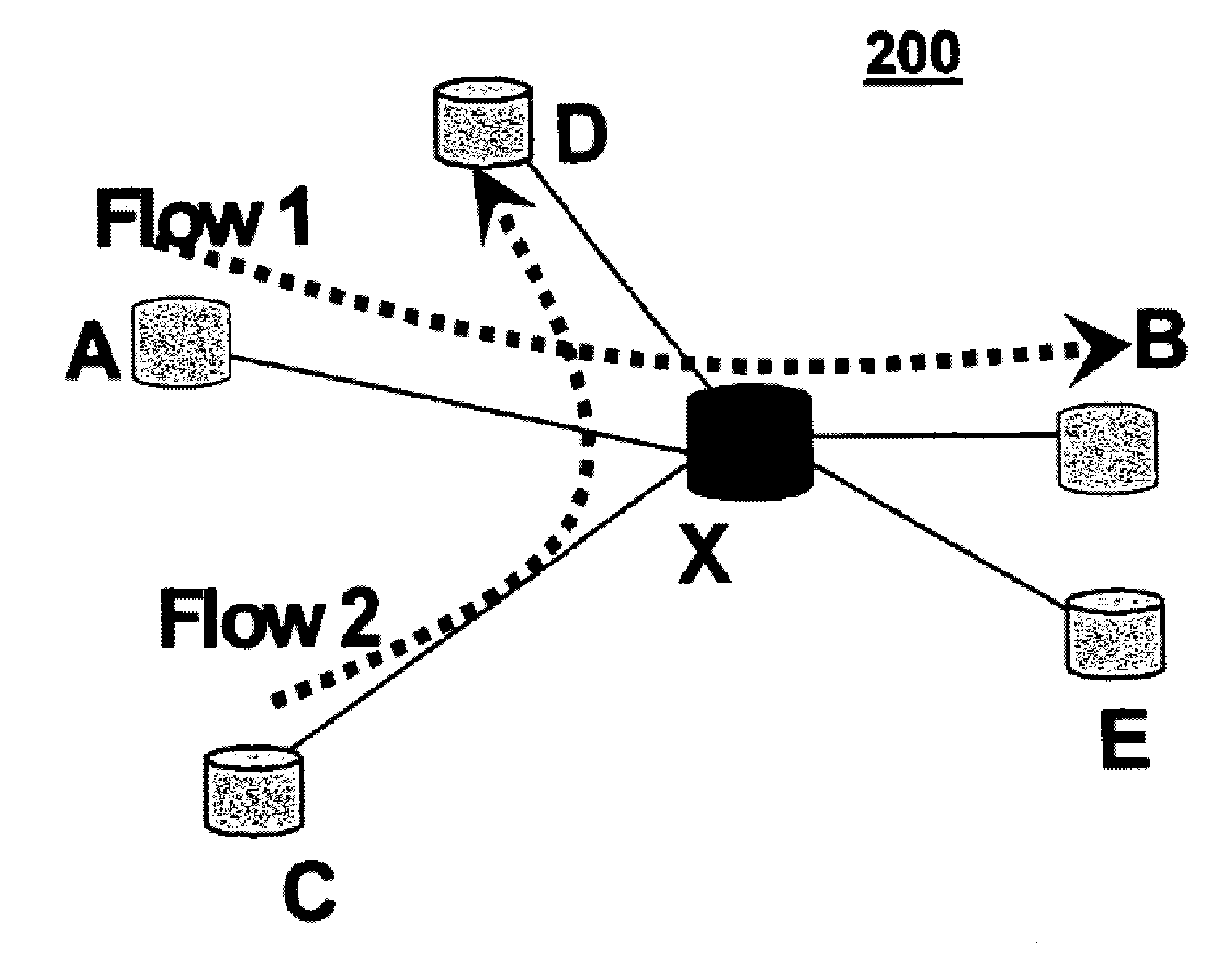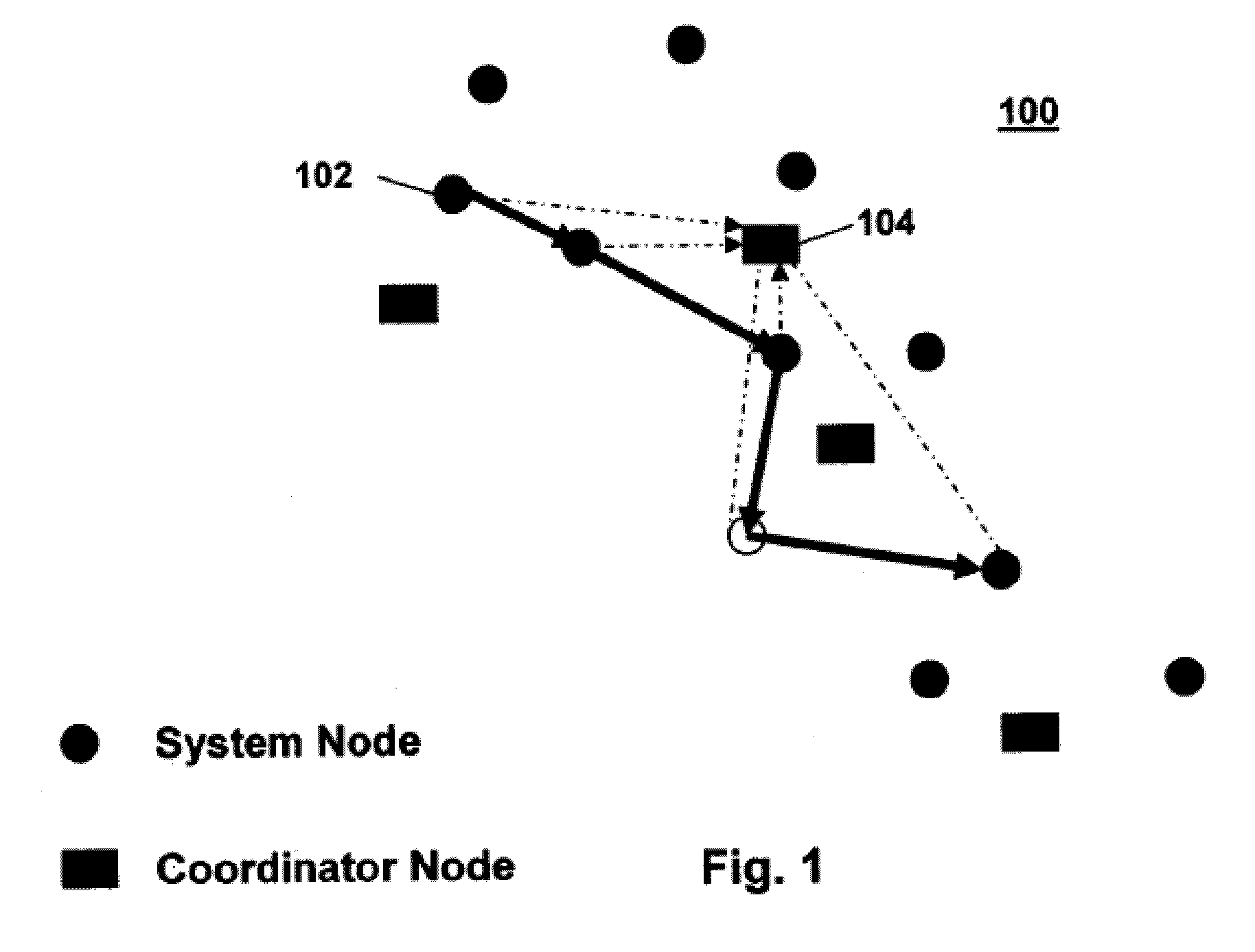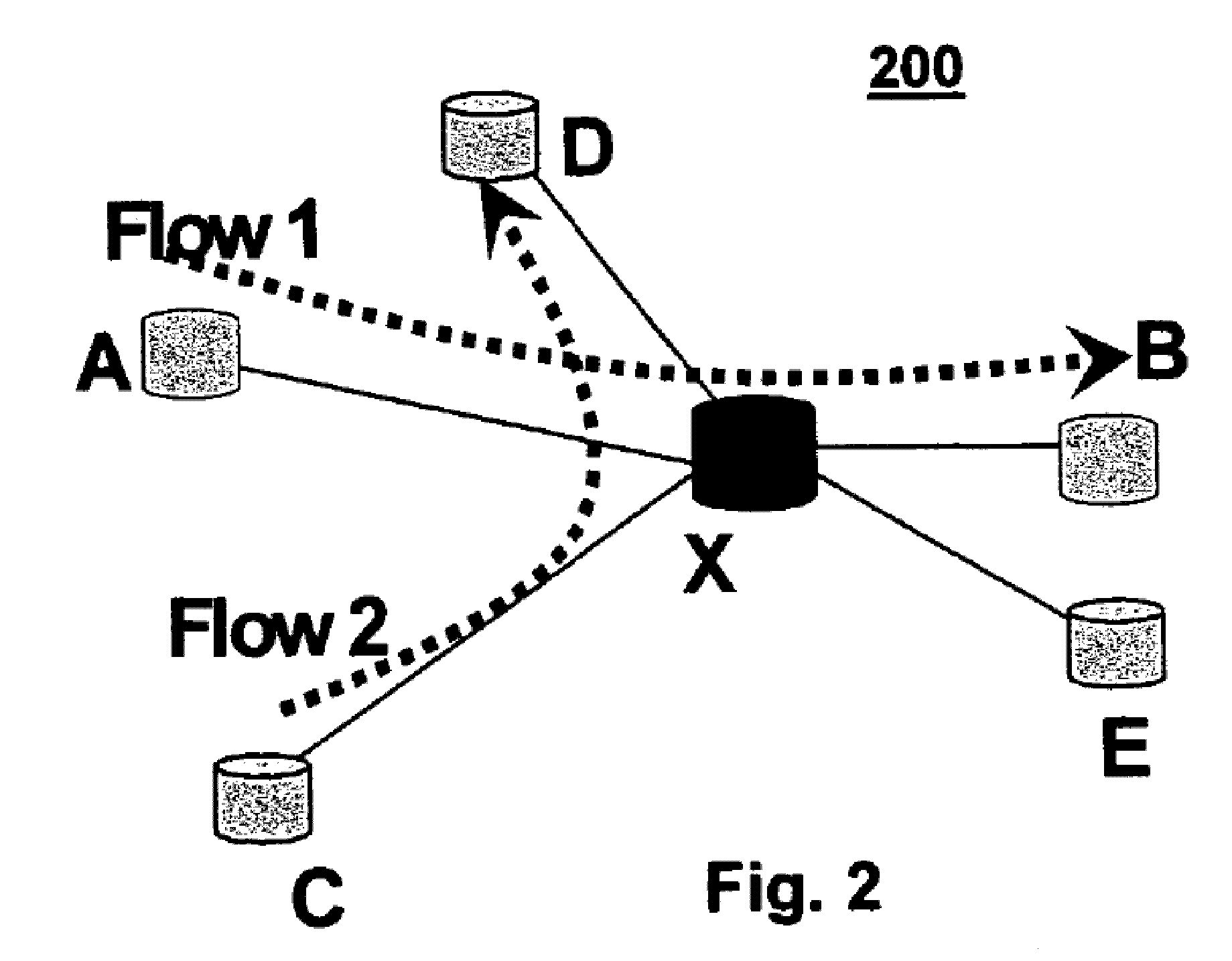Lightweight packet-drop detection for ad hoc networks
a packet drop detection and ad hoc technology, applied in the field of packet drop detection in ad hoc networks, can solve the problems that promiscuous monitoring cannot be relied upon to provide the information necessary for the packet drop detection algorithm, and malicious nodes can also provide incorrect information about the number of packets received
- Summary
- Abstract
- Description
- Claims
- Application Information
AI Technical Summary
Benefits of technology
Problems solved by technology
Method used
Image
Examples
Embodiment Construction
[0029]Network nodes execute the LiPaD algorithm and report on traffic flows passing through them. Referring to FIG. 1, every network node 102 on a path of flow in an ad hoc network 100 sends summarized information about the flow periodically to associated coordinator nodes 104. The coordinator node correlates the received information in order to determine any network nodes dropping packets.
[0030]The following terms are used in the LiPaD algorithm description.
[0031]Coordinator node: Node receiving reports from network nodes periodically, and analyzing the reports to determine malicious packet-dropping nodes.
[0032]Reporting-Time-Slot: Configurable period for nodes to send reports on flows to coordinator. Set to same value at all nodes in network.
[0033]Unique-Flow-ID: Each flow in the network is uniquely identified by concatenation of the source and destination IP addresses for the flow.
[0034]Sampling-Start-Time: The time when a node starts tracking a flow passing through it, during th...
PUM
 Login to View More
Login to View More Abstract
Description
Claims
Application Information
 Login to View More
Login to View More - R&D
- Intellectual Property
- Life Sciences
- Materials
- Tech Scout
- Unparalleled Data Quality
- Higher Quality Content
- 60% Fewer Hallucinations
Browse by: Latest US Patents, China's latest patents, Technical Efficacy Thesaurus, Application Domain, Technology Topic, Popular Technical Reports.
© 2025 PatSnap. All rights reserved.Legal|Privacy policy|Modern Slavery Act Transparency Statement|Sitemap|About US| Contact US: help@patsnap.com



